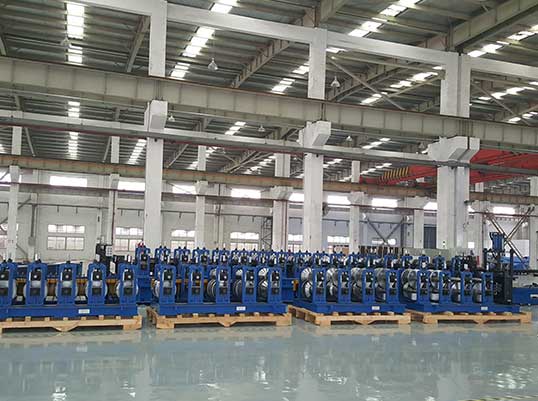Navigation Menu
Contact Us
- Email:
- info@wxavatar.com
- Address:
- Yurong Village, Yuqi Street, Huishan District, Wuxi, China.
Release Date:Mar 19, 2025 Visit:51 Source:Roll Forming Machine Factory
Solar bracket forming machines (typically roll forming machines) are widely used in the solar industry for producing racking components. Here’s a balanced look at their pros and cons:
Advantages
1.High Production Efficiency
Speed: Continuous roll forming can produce up to 30–100 meters of material per minute, ideal for large-scale solar projects.
Automation: Integrated punching, cutting, and stacking reduce manual labor and downtime.
2.Cost-Effectiveness
Low Material Waste: Precision forming minimizes scrap, especially with pre-coated or expensive metals.
Economies of Scale: Unit costs drop significantly for high-volume orders.
3.Design Flexibility
Custom Profiles: Easily create complex cross-sections (e.g., C-channels, Z-purlins) tailored to specific solar panel mounting needs.
Integrated Features: Add holes, slots, or embossing during the process to simplify assembly.
4.Consistency & Precision
Tight Tolerances: Achieve uniformity (±0.5 mm) across thousands of brackets, ensuring seamless on-site installation.
Repeatability: Identical parts reduce assembly errors and rework.

5.Material Versatility
Works with galvanized steel, aluminum, stainless steel, and other corrosion-resistant alloys suited for outdoor solar applications.
6.Durability
Produces strong, lightweight brackets with optimized structural integrity (e.g., reinforced ribs) to withstand wind, snow, and seismic loads.
7.Sustainability
Energy-efficient process with recyclable materials aligns with solar energy’s eco-friendly goals.
8.Scalability
Quickly switch between profiles by changing roller dies, accommodating diverse project requirements.
Disadvantages
1.High Initial Investment
Tooling Costs: Custom roller dies and punching molds can be expensive for small-batch projects.
Machine Cost: Advanced automated roll forming lines require significant capital.
2.Limited Suitability for Small Batches
Not cost-effective for prototyping or low-volume production due to setup time and tooling expenses.
3.Material Thickness Constraints
Best suited for thin to medium gauges (e.g., 0.5–4 mm). Thicker materials may require other processes (e.g., extrusion).
4.Design Limitations
Linear Profiles Only: Complex 3D shapes (e.g., brackets with bends in multiple planes) may need secondary operations.
Minimum Bend Radii: Sharp angles can weaken the material, requiring careful design.
5.Lead Time for Customization
Designing and machining new roller dies can delay production for unique profiles.
6.Maintenance Requirements
Regular upkeep of rollers, cutters, and hydraulic systems is necessary to maintain precision.
7.Space and Infrastructure Needs
Large machines require ample factory space and skilled operators.
When to Choose a Solar Bracket Forming Machine?
Ideal For:
High-volume production (e.g., utility-scale solar farms).
Projects needing consistent, lightweight, and corrosion-resistant brackets.
Custom designs requiring integrated features (pre-punched holes, interlocking edges).

Avoid For:
Small-scale or one-off projects (consider press braking or laser cutting instead).
Extremely thick materials or complex 3D geometries.
Mitigating the Disadvantages
Partner with Experienced Manufacturers: Leverage their existing tooling to reduce costs.
Optimize Designs for Roll Forming: Simplify profiles to minimize secondary operations.
Batch Production: Combine orders to justify tooling investments.
Conclusion
Solar bracket forming machines excel in speed, precision, and scalability for large solar projects but may be impractical for small batches or highly complex designs. By weighing your project’s scale, budget, and technical needs, you can determine if this method aligns with your goals. Let me know if you’d like help evaluating your specific use case! 😊